If your idea of the ultimate holiday is to take in as much culture and sightseeing as possible, without having to rise up off your deck chair, then it’s time to consider a European river cruise.
Iconic rivers criss-cross the continent, and most will take you past historic castles, stunning panoramic vistas, famous capitals, and lesser-known towns and villages. Europe’s rivers served as a vital means of transportation for thousands of years, which means along their courses you’ll find some of the continent’s oldest and grandest cities, including several capitals.
There are five large rivers on the continent that see most of the traffic — the Danube, the Loire, the Volga, the Elbe and the Rhine. Each has several tributaries, many of which are also navigable by boat, which means it’s also possible to combine more than one famous river on a single multi-day cruise. There are also several smaller rivers that have fewer cruise options, but are no less attractive or intriguing.
Although luxurious European river cruises tend towards the expensive side of travel, most are all-inclusive of meals and daily tours, such as walking tours and vineyard visits. If you’re unsure where to begin with picking the ultimate cruise, these 14 options are an ideal place to start.
Danube
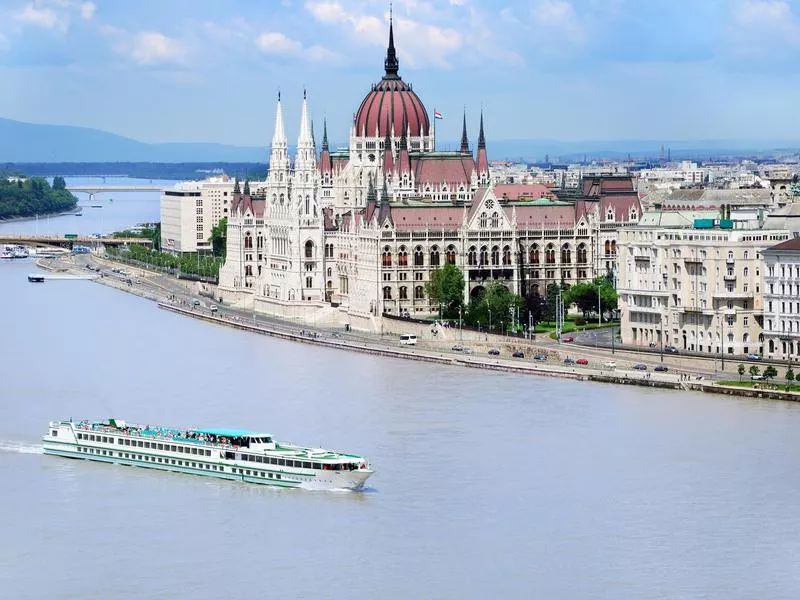
Most river cruises along the Danube begin or end in Budapest. alxpin / Getty Images
The Danube is one of Europe’s most beautiful rivers. From its source in Germany’s Black Forest to its mouth in the Black Sea, it runs through 10 countries, more than a dozen cities and four national capitals. As such, your options when it comes to cruises along the river are numerous.
The Hungarian capital of Budapest is the most common starting or ending point for cruises along the Danube, owing to its location and the splendor of the river as it flows through the city. The leisure cruise route between Vienna and Budapest is one of the busiest on the continent, but it’s possible to go even further. Several options stretch into Austria, or venture up towards Czechia using the Danube’s large tributaries. If you’re intent on an extended multi-day river cruise, it’s possible to reach Germany, connect to the Rhine, and cruise all the way to the Netherlands.
Whichever option you choose, the Danube will deliver scenic and cultural delights, and if you’d like to mix up your sedate cruise with some activity, most tours will stop along the route for sightseeing, cycling or hiking. Viking Cruises offers several options along the Danube and its tributaries, some of which last up to 15 days.
Rhine
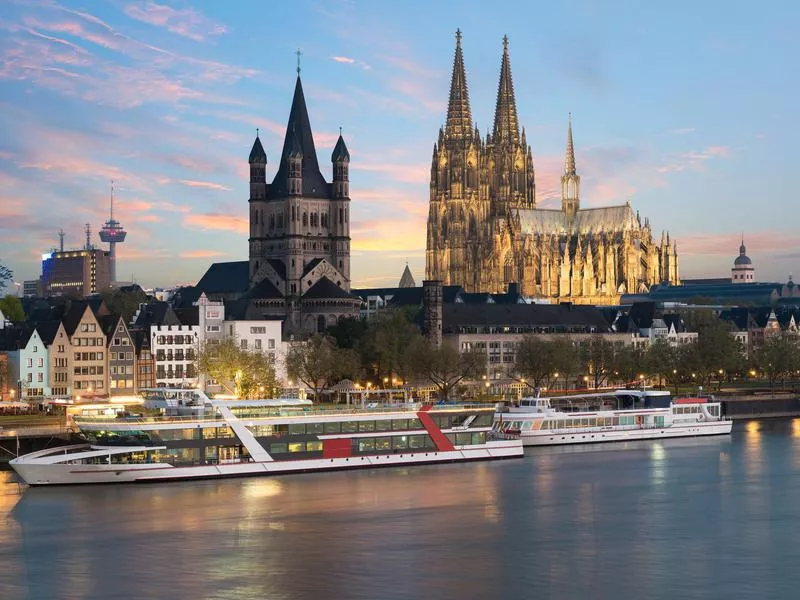
On the itinerary during a Rhine river cruise? Idyllic Cologne, Germany. ake1150sb / Getty Images
The Rhine runs some 766 miles from Switzerland to the Netherlands, where it empties into the North Sea. Along the way, it flows through six countries (Switzerland, Liechtenstein, Austria, Germany, France and the Netherlands) and some of the region’s most famous cities, including Basel, Strasbourg, Cologne, Düsseldorf, Koblenz and Rotterdam.
The sheer diversity of the scenery, architecture and culture along the course of the Rhine make it one of the best to cruise in Europe. There are several options available to would-be river cruisers, depending on how much time and money you can allow. In particular, the Middle Rhine, which is a UNESCO World Heritage Site, is a stunning region to tour by boat. It’s over this 40-mile stretch that you’ll pass dramatic landscapes dotted with historic towns, ancient castles and award-winning vineyards.
Although many cruises focus on the Middle Rhine, it is also possible to travel by boat all the way from Amsterdam to Basel. Tauck offers this as an option, with trips lasting approximately eight days, as well as several other itineraries to follow along the Rhine.
Main

The Main river passes destinations like historic Frankfurt. VogelSP / Getty Images
If you’ve already ticked the Danube and Rhine off your list, or you want to add a new leg through truly fascinating territory, then the Main River is a great option to consider.
This major Rhine tributary runs for 330 miles through the German Highlands, eventually flowing through Bavaria and joining up with the Rhine close to Mainz. Cruising the Main route will expose you to some of Europe’s most fascinating history, as much of the area it passes was devastated during the Second World War. The river also passes through Frankfurt, one of the world’s greatest history-meets-modernity cities.
The navigable stretch of the river runs approximately 240 miles, and many cruise companies, including Avalon Waterways, choose to combine it with other rivers in the region, usually the Moselle and the Rhine. It’s also possible to connect to the Danube, via the Rhine-Main-Danube Canal, which means you can extend your cruise into several nights through additional countries.
Moselle
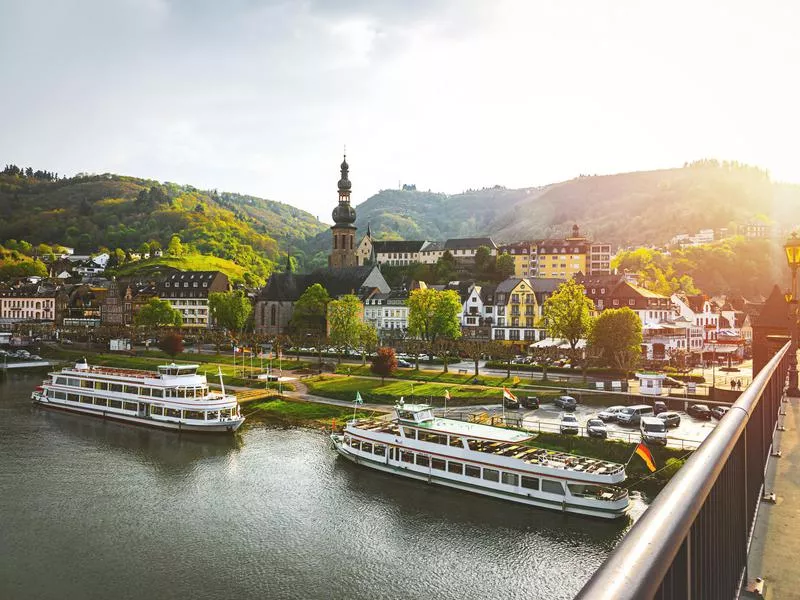
Lovely towns like Cochem, Germany make for ideal sightseeing along the Moselle. serts / Getty Images
The Moselle is another significant Rhine tributary. It runs more than 300 miles from France’s Vosges Mountains all the way to Koblenz in Germany. Sailing along this river will expose you to some historical delights, spearheaded by the fact that this is Joan of Arc territory. The Moselle also passes through incredible Alpine scenery flanked by castles, vineyards and medieval towns, as it skirts the border between Germany and Luxembourg.
Although parts of the journey take you through industrial regions, there are long stretches of unspoiled scenery, and most cruise operators also combine tours of the Moselle with those on the Rhine, which offers increased diversity. Riviera Travel offers several cruise options along the Moselle and Rhine throughout the year.
And if you can’t get enough of the rivers in this part of the world, you can keep going along the Main or Neckar as well. This can extend your trip from five to 15 days, and take you from Amsterdam all the way to Basel.
Rhône
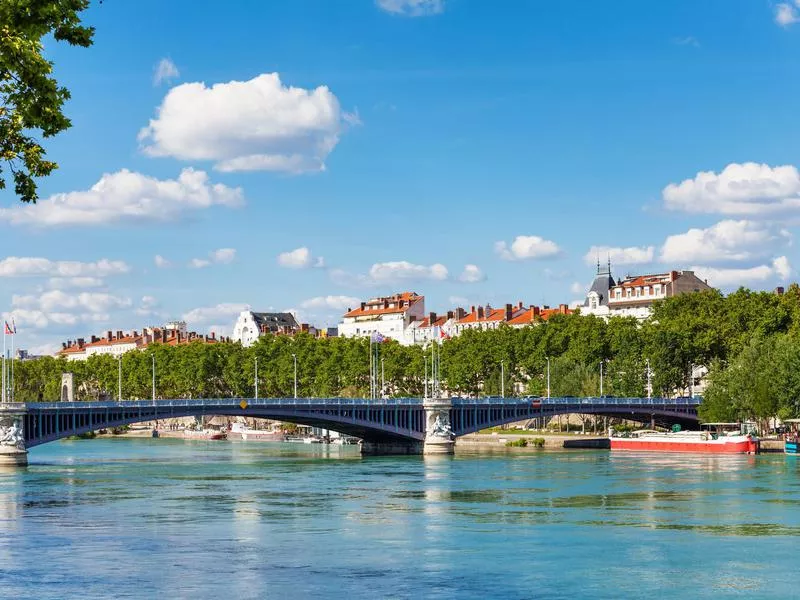
Rhone cruises venture past quintessential French towns like Lyon. SerrNovik / Getty Images
France’s Rhône River presents some of the continent’s best cruising options, with several companies offering remarkable trips through the country’s south. The Rhône, together with the tributary Saone, offers 500 miles of Provencal scenery as it winds its way towards the Mediterranean. It eventually empties into the sea not far from Marseilles, making this one of the most diverse and captivating cruise options on offer in Europe.
Along the way, the boat will pass through some of France’s best food and wine cities, including Arles, Avignon, Viviers, Tournon-sur-Rhône and Lyon. There will be ample time to take in some the region’s famous walled towns, monasteries and even Papal palaces.
Cruise companies like Avalon Waterways and APT offer trips lasting up to seven days. Most passengers choose to fly into Paris, take a high-speed train to Lyon, and spend a week on board the boat in a memorable roundtrip.
Seine
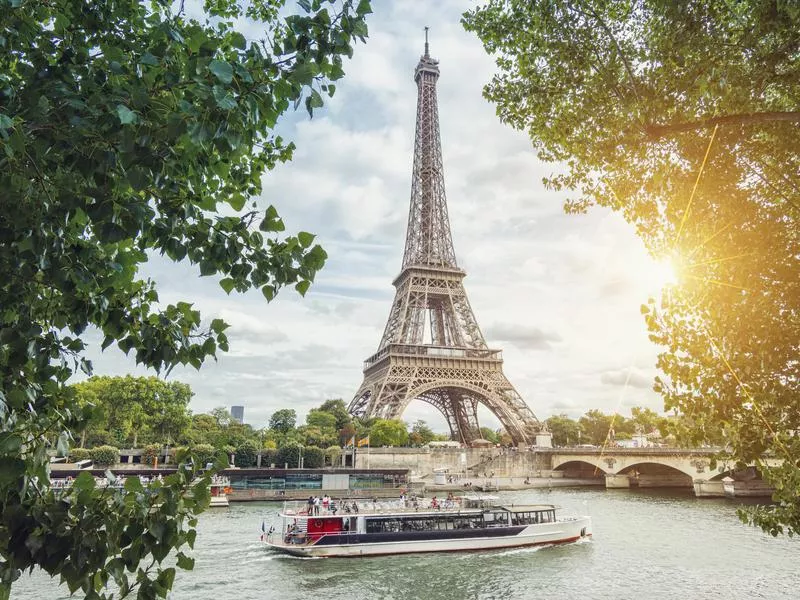
Paris makes for a stunning backdrop on a Seine river cruise. But there’s more to the river than France’s capital. rclassenlayouts / Getty Images
For most people, a cruise on the Seine involves hop-on, hop-off sightseeing to experience a few Parisian highlights. But while this is certainly a great way to see Paris, there’s a lot more river than that which passes through the capital.
Although a lot of people combine a cruise on the Seine with a transfer to Lyon, where they continue towards the Mediterranean along the Rhône, Scenic offers cruises that travel northeast from Paris to Rouen, Honfleur and Vernon.
Each of these cities offers something unique, from the ancient capital of Normandy, to quaint seaside villages like Honfleur. Of course, leaving the French capital by boat, and heading out towards the coast, is an incredible experience in itself, and the perfect way to see the region from an all-new perspective.
Volga
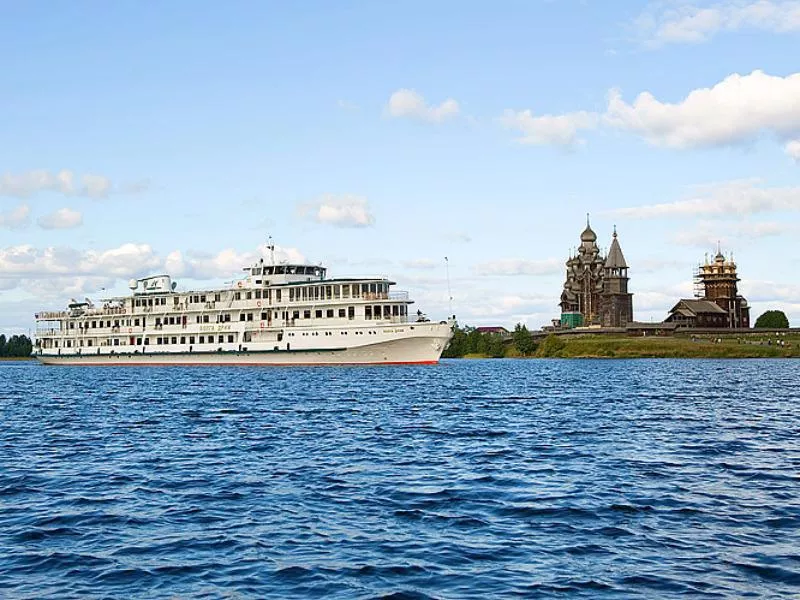
A trip on the MS Volga Dream showcases striking Russian architecture. MS Volga Dream / Facebook
At over 2,000 miles, the Volga is Europe’s longest river. It’s western Russia’s main waterway, and has vast historical significance to the region. A cruise along the Volga is a magnificent affair, passing through grand cities, historical villages and impressive scenery.
The river is divided into three key parts: the Upper (which includes the source), Middle and Lower (where it flows out into the Caspian Sea). It’s navigable for most of its course from March to December each year, and if you use the numerous canals along the route, it’s possible to reach the likes of the Baltic and Black Seas, and even Moscow.
Given the sheer length of the Volga, and the size of Russia, it would be impossible to see everything on a single cruise. Many travelers choose to sail between Moscow and St. Petersburg on the stately MS Volga Dream, which can take between seven and 10 days, depending on excursions en-route.
Over the course of this journey, you’ll also pass through numerous locks and cross two of the continent’s largest lakes.
Elbe

Dresden, Germany is one of many fascinating cities you’ll see on an Elbe cruise. ewg3D / Getty Images
The River Elbe holds historical significance as the one-time border between East and West Germany. Today, it flows from Germany to Czechia, linking the popular tourist cities of Berlin and Prague.
Cruises along the Elbe also expose travelers to more obscure towns along the way, such as Meissen and Wittenberg, which offer authentic insight into the region’s fascinating culture. There’s the added benefit of heading all the way to the Czech capital, one of the continent’s most celebrated destinations.
There are several ways to approach a cruise along the Elbe, but many consider the best starting point to be Berlin, which is close to the river itself. From there, you can coast along the river all the way to Prague, over the course of at least eight days, with scenic stops along the way. There are many cruise lines that operate along the route, including Nicko Tours, Lueftner Cruises and Shearings.
Loire
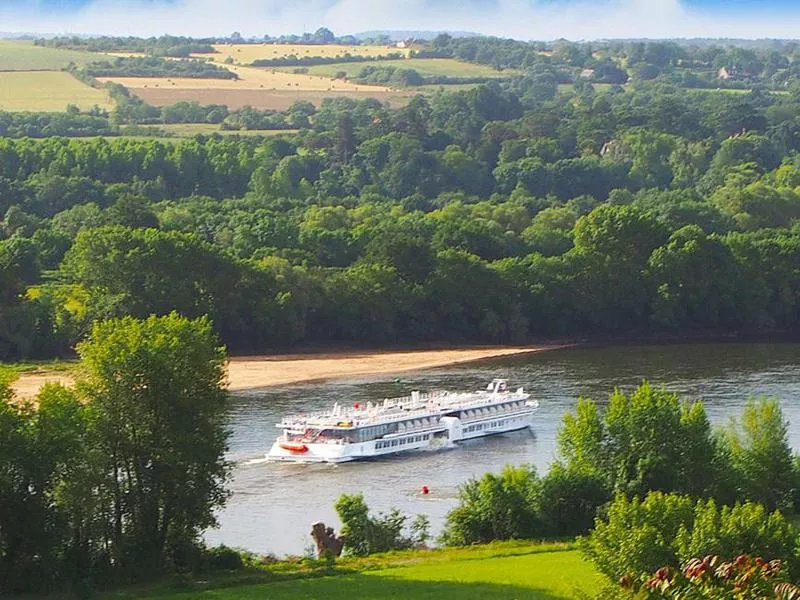
The MS Loire Princess combines luxury amenities with stunning scenery. MS Loire Princess
The Loire river cuts across France from east to west, forming the famous Loire Valley. It’s been the domain of holiday-goers for many years, thanks in large part to the region’s scenic beauty, small towns and exquisite wines.
There’s just one major cruise ship that floats along this famous river, called the MS Loire Princesse. It’ll allow you to explore the valley’s best attractions, including several castles and French national monuments.
In many ways, to cruise down the Loire is to travel sedately through history, and you’ll stop in at several cities and quaint towns along the way. The typical cruise option is eight days long, starting and finishing in Nantes. You’ll venture out east, before retracing your steps all the way back to your starting point.
If you prefer a more active approach to sightseeing, you can also combine your cruise along the Loire with a biking option that combines both modes of transport for optimum sightseeing enjoyment.
Douro
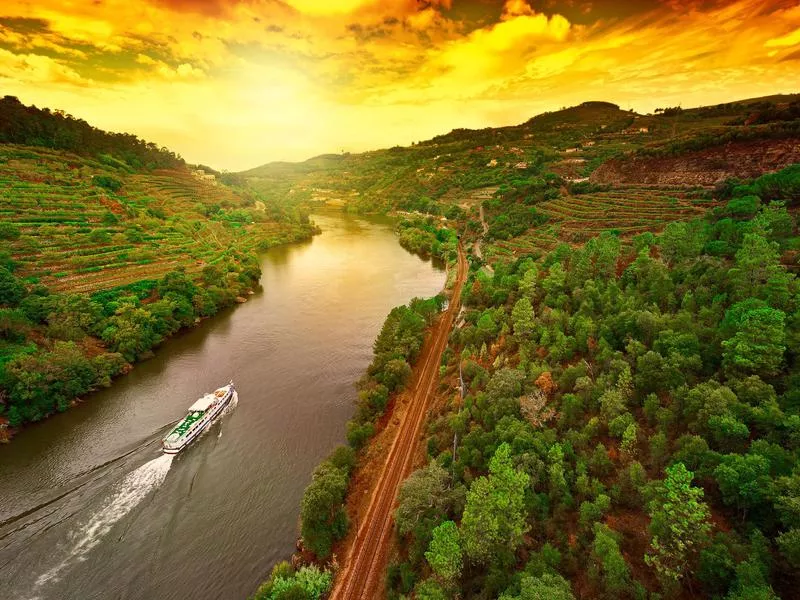
The Douro Valley is a beguiling backdrop for a cruise. gkuna / Getty Images
The stunning Douro River offers an enticing river cruise option in the far west of Europe. The river winds its way through Spain and Portugal, and a cruise along it will allow you to explore several fascinating cities and attractions.
The Douro is one of the Iberian peninsula’s largest rivers. From its source in northern Spain, it flows all the way to the popular Portuguese coastal town of Porto, where most cruises start and end.
Cruises along the Douro usually venture up into the Douro Valley, a UNESCO World Heritage Site. This incredible valley, along with several postcard-worthy towns and ancient cities, will give you insight into some of the oldest Portuguese food, culture and traditions. Emerald Waterways and Scenic offer various sailing itineraries through Portugal.
Thames
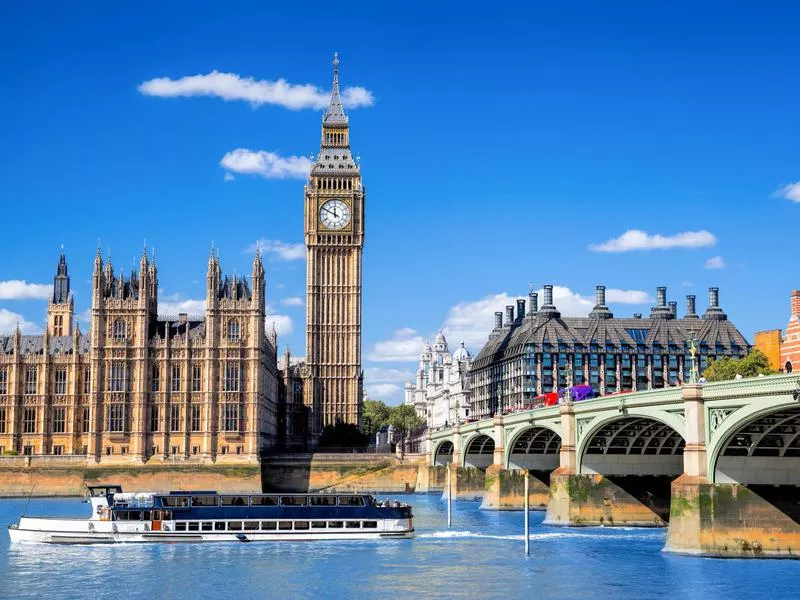
London is a Thames river cruise must-see…but not all a journey has to offer. extravagantni / Getty Images
Much like Paris’s Seine, most people who venture out onto the Thames will do so on a short sightseeing excursion in London. But this iconic river flows through more than just the British capital — and all but 25 miles of the river is open to cruising.
The Thames winds sedately through eight English counties, from Cotswold Hills all the way to the North Sea. Along the way, it passes through such prestigious cities as Oxford, Reading and Windsor. Much of the river is controlled by locks, but the final 50 miles are tidal, meaning not all ships can access this section.
Although boats on the Thames are a regular sight, it’s unusual for cruise ships to schedule journeys along this stretch of water. Instead, the majority of scenic cruises are done on large boats, often just for the day, to offer a unique vantage point of London and its nearby attractions.
If you’re intent on an overnight journey on the famous river, then your best bet might be booking a ticket aboard the converted cargo barge Magna Carta. Though built in Holland, it now sails the River Thames with capacity for up to eight overnight guests.
Gota Canal
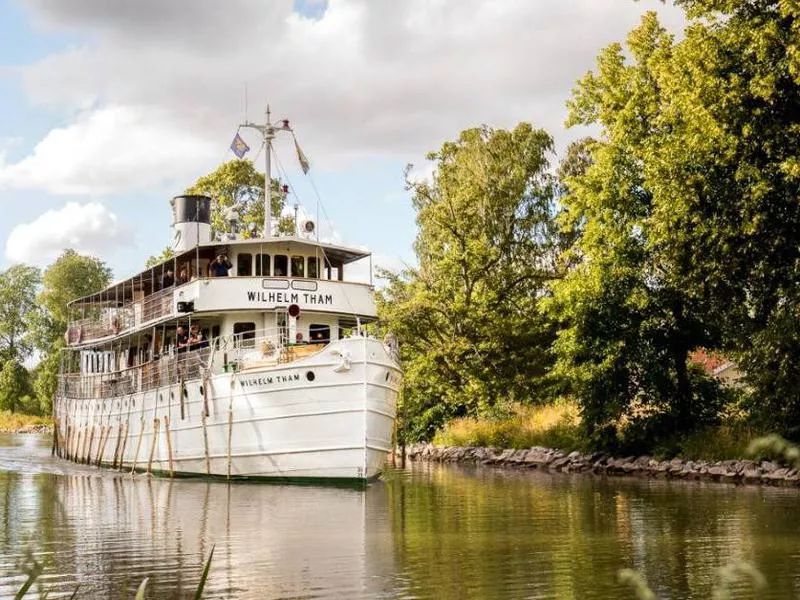
The historic Wilhem Tham is an ideal vessel for taking in the Gota Canal’s picturesque sights. Göta Kanal / Facebook
There are few better ways to discover Sweden’s unique beauty than by venturing onto her vast waterways. Arguably the best of these is the 370-mile waterway that links Gothenburg to the Baltic Sea, called the Gota Canal, and you can ride a classic steamer, the Wilhem Tham, for the majority of it. This jaw-dropping 25-cabin ship dating back to 1912 is an experience in itself.
The canal will take you past churches, castles and remote Swedish villages, with an option to journey for four or six days. Most of the routes along the country’s so-called Blue Ribbon also require the use of locks, which the expert crew will handle, allowing you to sit back and enjoy the incredible sights and sounds.
Po
The Po River is Italy’s longest, flowing for some 400 miles in an easterly direction from Venice. Though it passes through various cities such as Turin, Piacenza, Mantua and Ferrara, it’s only possible to cruise on approximately 100 miles of it, to the town of Mantua.
Cruises along the Po River begin in perhaps the most famous canalized city of them all, Venice. There are various stops along the way, but most cruises will include the likes of Murano, Burano and Verona. Some, such as CroisiEurope Cruises, also offer land-based connections for day trips to famous towns a short distance from the river, including Polesella, Bologna, Ravenna and Ferrara.
Cruises along the Po last anywhere from five to 13 days, with most operating between March and October. Although Italy is not big on river cruises, this is perhaps one of the most unique ways in which to explore some of the country’s iconic cities and towns.
Oder
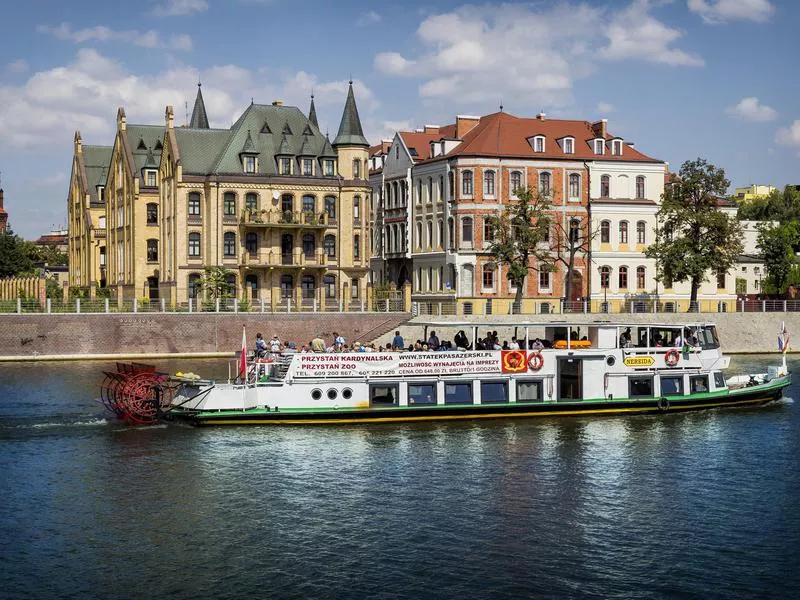
Cruise past Wroclaw, Poland on an Oder river boat. ewg3D / Getty Images
Although the Oder is more inconspicuous than other European rivers, particularly when it comes to large commercial cruises, it’s by no means one to overlook. As part of the Roman “Amber Road,” it was at one stage used to transport amber from the Baltic region all the way to the Mediterranean.
Cruises on the Oder don’t tend to go as far. Most travelers begin in Berlin, transfer to nearby Potsdam, and then spend up to seven nights cruising to the Gulf of Pomerania, where the river empties. Routes between Germany and Czechia, such as those offered by Saga, last up to eight nights, although some tour operators take the trip a step further, and include an additional leg that will take you all the way to Copenhagen.
Whether you choose to continue on to Denmark, or go with a shorter option, a river cruise on the Oder will allow you to experience both German and Polish culture in a way few land-based travelers have.